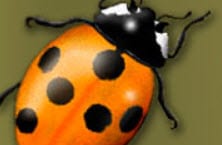by: Chris Zoller, Extension Educator, ANR
 2019 is upon us and you may be meeting soon with your lender to discuss financial needs for the year. We all know agriculture is suffering from poor economic conditions – and the outlook for many sectors of the industry doesn’t look real promising. A variety of factors are forcing lenders to be more critical of loan applications. Let’s review a few things you can do to assist your lender as they review your loan application.
2019 is upon us and you may be meeting soon with your lender to discuss financial needs for the year. We all know agriculture is suffering from poor economic conditions – and the outlook for many sectors of the industry doesn’t look real promising. A variety of factors are forcing lenders to be more critical of loan applications. Let’s review a few things you can do to assist your lender as they review your loan application.
Financial Forms:
A year-end Balance Sheet is very helpful and provides a snapshot of the assets, liabilities, and net worth of your farm. Get in the habit of completing one each year for your lender to keep on file and for your own reference so you can monitor changes over time. You can get a blank balance sheet from your lender or access one here: https://farmoffice.osu.edu/farm-management-tools/farm-management-resources.
Cost of Production:
Know your cost of production. What does it cost you to produce 100 pounds of milk? What is your per acre or per ton cost to grow and harvest crops? If you need assistance with determining these, please see: https://farmoffice.osu.edu/ for copies of Ohio State University Extension production budgets and https://farmprofitability.osu.edu/business-summariesfor copies of the Ohio Farm Business Summaries.
Goals:
Why are you requesting money from your lender? What is your goal(s)? What are you hoping to accomplish with the money you are requesting? Will you use the money as an operating loan to plant your crops? Are you planning an expansion? Are you wanting to consolidate existing debt? Regardless of the reason, your lender is going to need to know how you plan to repay the loan. A budget and cash flow projections will help everyone understand how the money will be used and how it will be repaid. Research has proven that you are more likely to accomplish your goals if they are written. Be sure your goals are Specific, Measurable, Attainable, Rewarding, and Timed (SMART). See this Ohio State University Extension fact sheet for information about writing SMART goals: https://ohioline.osu.edu/factsheet/node/767.
Tax Returns:
Your lender may request copies of your tax returns. Make sure you categorize income and expenses the same way each year. This allows the lender to compare apples-to-apples when evaluating your historic income and expenses. Also, if you pre-pay expenses or defer income, make sure your lender is aware of this so they can make accrual adjustments.
Communication:
Communication with your lender is critical. Your lender is interested in understanding your farm, knowing how you are progressing, and what your plans are for the short and long-term. Invite your lender to visit the farm for a tour, a ride in the tractor, or to assist with milking!
Business Plan:
Every lender would love to see each client have a written business plan. A business plan is made up of five parts: Executive Summary, Description, Operations, Marketing Plan, and Financial Plan. The University of Minnesota Extension has a template available at the following site: https://agplan.umn.edu/.
Summary: The items discussed in this article are ones you can control. Focus on these areas and make adjustments accordingly to make improvements. Contact the Knox County Extension Office for assistance.









